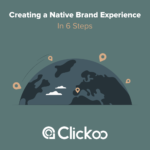
There’s no denying that machine-powered translations are getting more and more advanced. Some would argue that they remove the need for a human translator altogether, enabling marketers to maximise their budgets by using a free service.
However, we wouldn’t say that real translators have been rendered obsolete quite yet – in fact, they may never be. Relying on machines for this very human aspect of your marketing can be dangerous for your brand. Here, we explain why…
Imperfect translations
Let’s start with the fact that you simply can’t guarantee a perfect translation with technologies. Machines aren’t up to this level yet, so double-checking through a human translator (at the very least) is a necessity.
Whilst you can forgo this step, doing so is incredibly risky. Unfortunately, many brands have realised their mistake too late. In some cases, the results of Google Translate have gone really, really badly [LINK: ‘5 Times Google Translate Really Went Wrong’] – even causing offence in some cases.
If you do opt to use a free translation service, then you’ll still have to pay for a human translator to ensure your communications are being conveyed effectively. Of course, this makes using the machine in the first place potentially futile.
Lack of localisation
Yet even if the translation from the technology was perfect, it still may not resonate with your audience. Why? Because it hasn’t been localised.
Translation acts on the belief that language is the only differentiator between countries. But this isn’t true at all. Consider the UK and Australia – they both speak English, but not in the same way. As well as having their own particular vocabulary (‘stuffed’ means very tired or in trouble in Australian English, for instance, whereas you’d associate it with being full from eating in the UK), how direct they are in their way of speaking also differs. Australians tend to get to the point quicker, while those in the UK might take a little more time.
Localisation, however, considers all the linguistic quirks and cultural intricacies within a country too, taking into account both audience insights and macro environmental factors. This means your campaign will be built entirely around those it hopes to target. Every word you say will make sense to them, and there will be no discrepancies – just as if one of their closest friends had told them about your product or service.
Clickoo’s localisation approach
Successful localisation requires an incredibly comprehensive approach – one that we take at Clickoo. The actual process involves over 120 steps, but each one is completely necessary in order to guarantee that, when you advertise to a foreign market, you’re doing it right.
The first pillar of the process involves getting familiar with your audience – we’ll assess 18 example data points, like interests and attitudes. The next stage is analysing the broader market. Here, we look at more than 30 industry-specific factors, including those related to technology and environment. Lastly, we overlay this with localised language, drawing on our localised speakers and creating a unique, localised communications matrix.
Localising the strategy in this way, as well as the language, drives the ultimate success for your campaigns.
Ignite growth with us
Through our in-depth approach to paid media localisation [LINK: ‘A Guide To Clickoo’s Three-Pillar Approach To Paid Media Localisation’], you can trust that you won’t be met with any of the issues of machine-run translation. Our team of highly experienced paid media experts make your ambitions our ambitions, ensuring that your advertising brings about the outcomes you actually want.
On top of this, you’ll save a tremendous amount of time. As you can imagine, pulling together all the information required for a flawless international campaign is no mean feat. We’ll do it for you, just like we have with countless other big-name brands.
With Clickoo’s help, you can achieve the growth you never previously thought possible. Partner with us, and your paid media will perform well no matter the territory you’re targeting. Let’s talk today.


